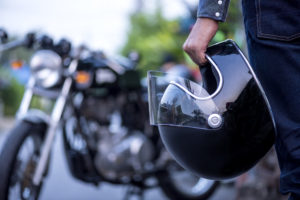The 4th of July is upon us and, of course, that means fireworks. The lure of pyrotechnics is almost irresistible for many, especially kids. In fact, there has been a 920 percent increase in fireworks consumption over the last 30 years. Fortunately, there has also been a 90 percent decrease in fireworks related injuries over the same time period. The key to those decreases? Safety awareness.
Despite the progress on reducing injuries, there is still an average of at least 100 fireworks related injuries reported each year, and some of them involve loss of limbs or organs such as eyes. In addition, fireworks displays that have gone awry have resulted in accidental deaths. To minimize the risks, planning is essential and the “before, during and after” model is the perfect planning tool.
Before
Make sure consumer fireworks are legal in your state and if they are, check to see if there is a “season” during which you can display them. Unfortunately, pyrotechies in Arizona, Delaware, Massachusetts, New Jersey, New York and Rhode Island, are out of luck as fireworks are banned. Most states that have a summer season for fireworks set the season as late June into early to mid-July. In addition to state regulations, many local governments such as counties and municipalities impose bans or time restrictions on fireworks displays so make some phone calls to make sure what you plan to do is legal.
If consumer fireworks are legal, start the festivities planning by buying quality, legal fireworks from a reputable source. Homemade or illegal fireworks can be very dangerous or deadly and are not worth the risk or the money you might save. Also, never alter or combine fireworks or use fireworks with any compromised packaging.
Once you have your fireworks collected, plan your event carefully. Choose an outdoor space that is a safe distance from spectators, buildings, vehicles and dry vegetation. Wet that area down thoroughly before you begin shooting, and make sure that you have a hose or plenty of water on hand for the duration of the shooting and for a safe period of time after. Use plywood if you need a hard shooting surface or if you need to construct a barricade between the shooting area and spectators, buildings or flammable vegetation.
During
After you are set with your supplies and location, let the fun begin. To get the ball rolling, designate one adult shooter to set off the fireworks and make sure that person has not and does not drink any alcohol. Impaired judgment combined with potentially dangerous explosives is not a good mix. The designated shooter should wear safety glasses and long sleeve clothing to protect against sparks and flying debris. The directions for lighting for each device should be read and followed because they may not all be the same. After each firework is ignited and deployed, the remaining packaging should be doused with a hose or in a bucket of water. If a firework does not light the first time, do not attempt to light it again. Wait 20 minutes to see if there will be a delayed ignition and if there is not, douse it with water and move on to the next one.
After
Place all used and doused items in a covered, fireproof container and store it outside in a safe area. Once you are absolutely certain there is no risk of fire or explosion, you can permanently dispose of the items.
Celebrate the 4th holiday with as much fanfare as you can, but play it safe along the way.

Bret Hanna of Wrona DuBois in Utah, focuses exclusively on litigating plaintiffs’ medical malpractice and catastrophic personal injury cases. He has represented clients in state and federal courts, in mediations, and in administrative proceedings in Michigan and Utah since 1991.










One Comment
Joe Carson
Can't really sue a firework company for product liability, you go into that expecting some risk.
Comments for this article are closed.